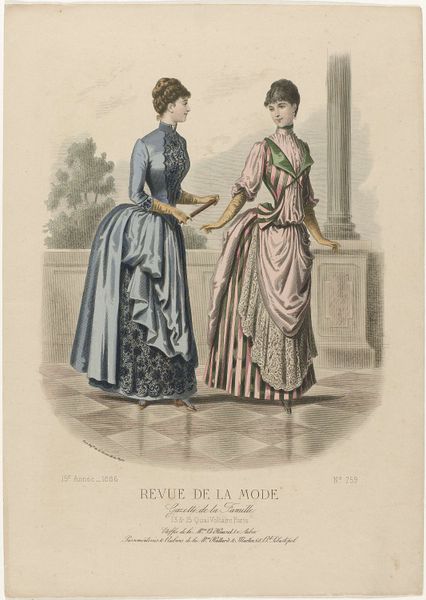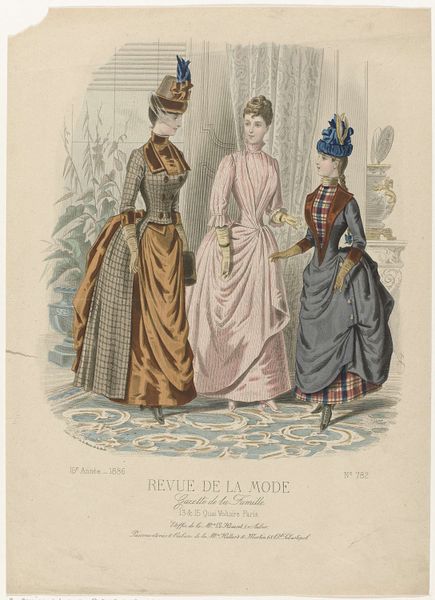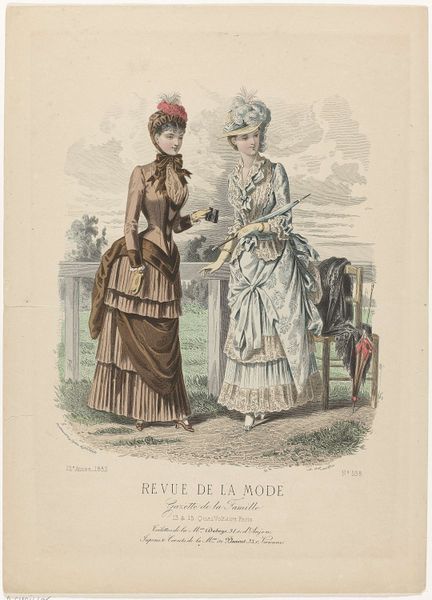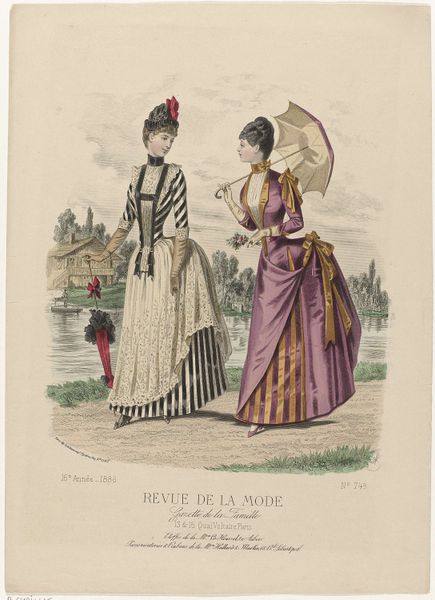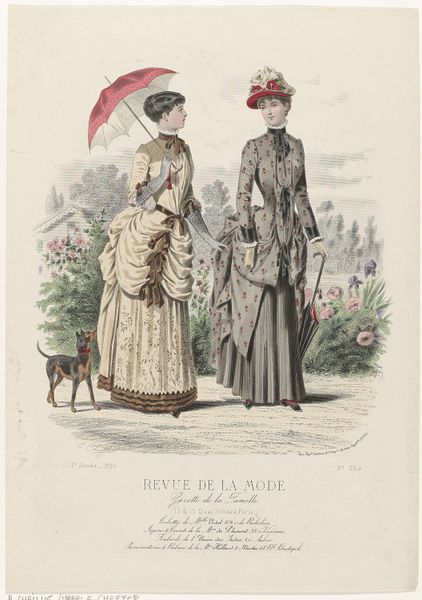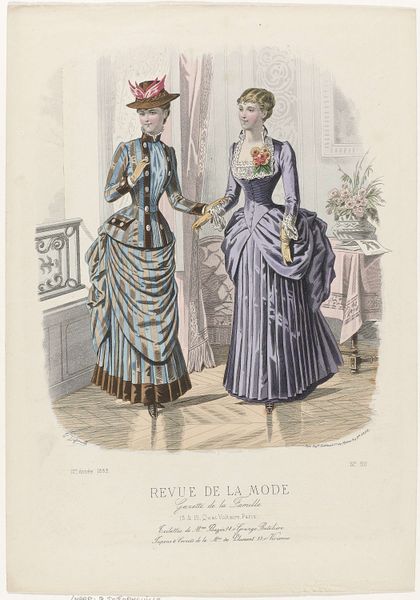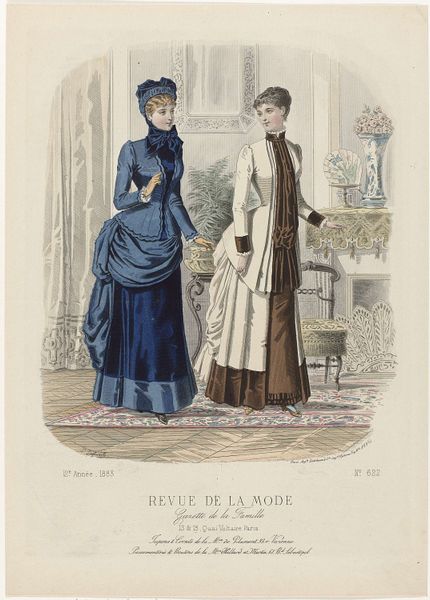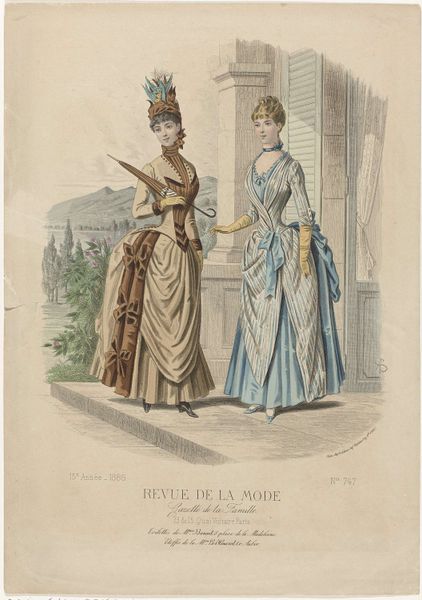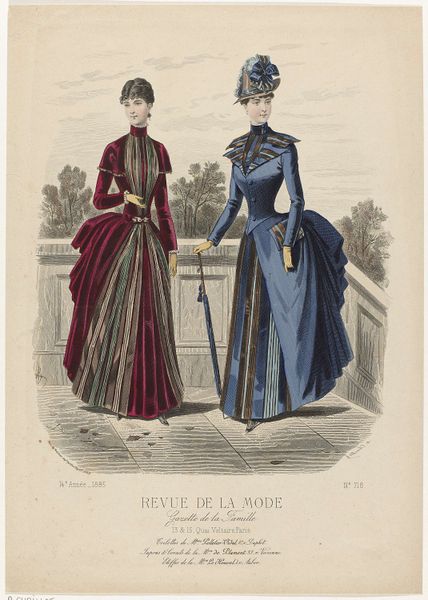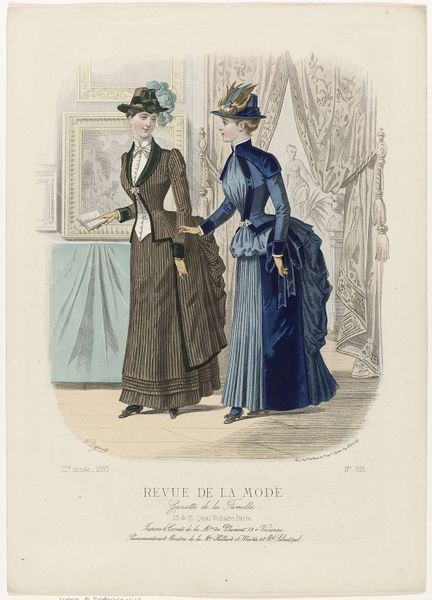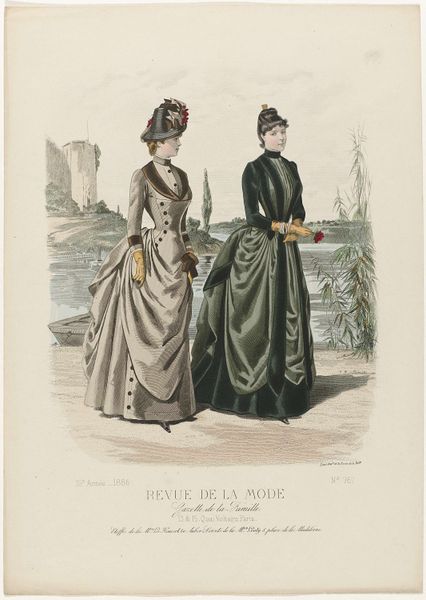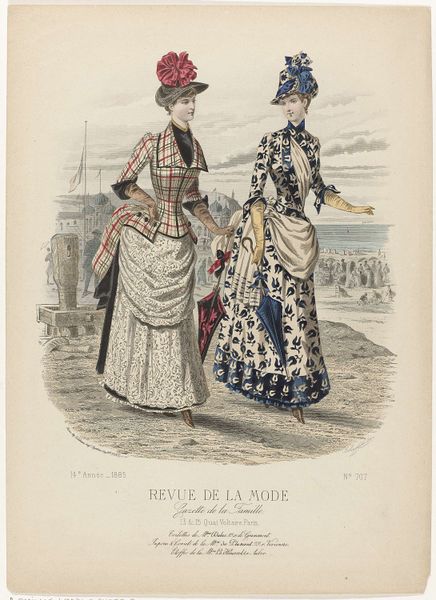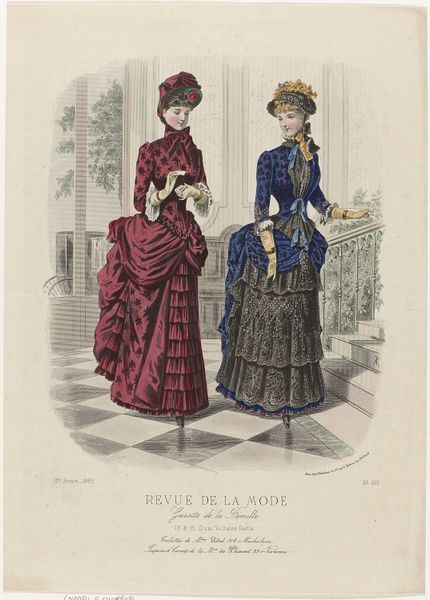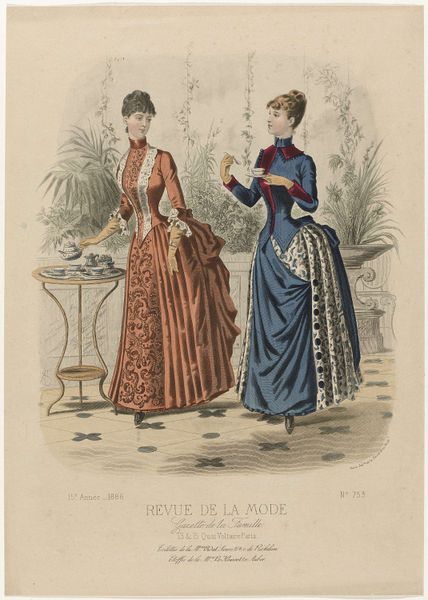
Revue de la Mode, Gazette de la Famille, dimanche 20 juin 1886, 15e Année, No. 755: Modèles & Tissus (...) 1886
0:00
0:00
Dimensions: height 375 mm, width 268 mm
Copyright: Rijks Museum: Open Domain
Curator: Well, isn’t this divine? Look at "Revue de la Mode, Gazette de la Famille," a peek into 1886 through the eyes of A. Chaillot. Those dresses... they speak volumes, don’t they? Editor: They certainly do scream something. Opulence? Restraint? The sheer amount of fabric involved feels… labour-intensive. You’ve got detailed patterns fighting for space with draped swathes, and all contained in these exaggerated silhouettes. Who was making all of this? Curator: Precisely! I think there’s a quiet elegance. Imagine the rustle of those skirts, the delicate weight of the lace... it’s pure poetry. And the suggestion of leisure! These are women of means, strolling near the sea. It almost has that feeling of Renoir to me with a slight theatrical edge. Editor: "Quiet elegance"? Maybe. I see the industrial revolution hard at work: new dyes making these shades possible, sewing machines churning out all this embellishment. It's less about artistry than industrial ambition, I suspect. And speaking of sea, what of the fabrics involved, what are their origins, what would the social or material costs be of such elaborate dresses? Curator: I concede there's ambition—but look at the faces. The artist captured a softness, a dreamy quality that suggests a deeper story than mere manufacturing. And there is indeed a history of colonial materials at play when observing the styles depicted. Aren’t you just a tad romantically indifferent about them as characters? Editor: As characters, maybe. But when I consider the resources sunk into these ensembles – the global trade networks involved, the working conditions of the textile workers... it really shifts how you see supposed beauty, wouldn’t you agree? They're objects far beyond their immediate presentation. Curator: Well, perhaps seeing the objects as material is not where the romance dies, maybe it's just where the dream changes—thank you for your outlook. Editor: Likewise; I'm glad we considered it, but I maintain my interpretation as reflecting our material condition is valid.
Comments
No comments
Be the first to comment and join the conversation on the ultimate creative platform.
